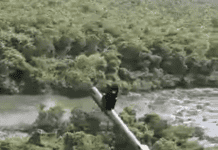
In Africa’s gold country an Australian mining firm is embroiled in a bitter and deadly $395 million dispute.
By Eryk Bagshaw and Edward Adeti
AUGUST 25, 2022
WARNING: This story contains images of the deceased.
The tunnel runs 150 metres underground. Inside, Australian mining manager Andrew Head is trudging through mud and muck. He only has a headlight to guide him as the temperature in this dark pit in western Africa hits 45 degrees.
The tunnel has gold running through its veins. Head, a rugged 48-year-old, father-of-three from Sydney’s northern suburbs is searching for gaps in the wall.
“It’s 100 per cent humidity. There is water leaking everywhere and you’re wading all the time in human faeces,” he says. “It’s like a scene from Raiders of the Lost Ark.”
Two companies bought access to this barren patch of earth in Talensi, northern Ghana in 2008 and 2014. Now one of them is hitting paydirt, while the other is crying foul play.
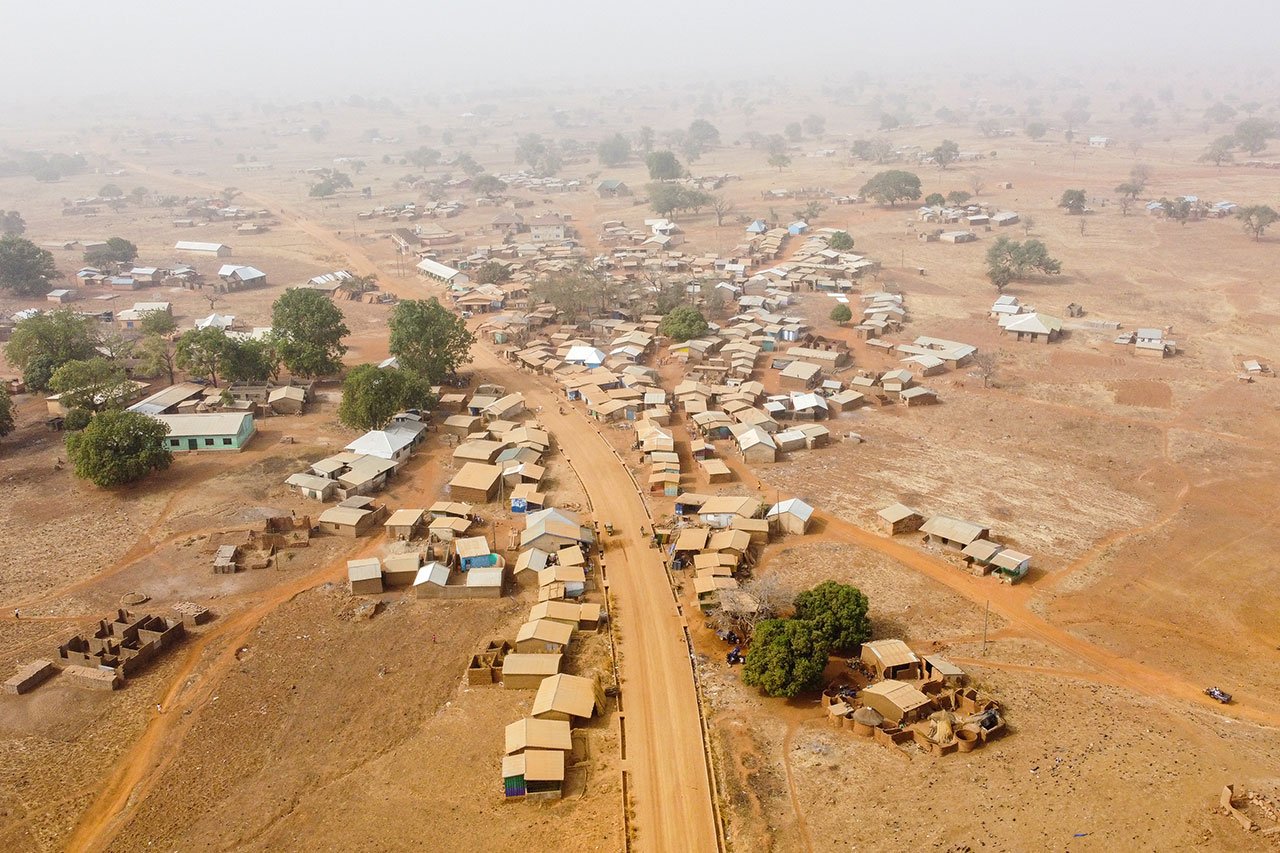
Separated by 2½ kilometres of rock, rubble and poverty above ground, the mines stand opposite each other. One is an Australian exploration mine run by Cassius Mining Limited. The other is a Chinese state-linked mine run by the Shaanxi Mining Company.
Both came here to make their fortune by tapping into the rich veins of gold that run through this ancient terrain but competition soon turned to suspicion and hostility. Now they are involved in a bitter dispute over claims of trespass, theft and the deaths of more than a dozen miners.
In 2017, Cassius noticed deep Chinese ventilation shafts had begun popping up closer and closer to the Australian mining concession. The size of Shaanxi’s above-ground operation seemed far larger than the plot, about the size of three football fields, it had been granted to explore. By 2018, the mine was employing 250 workers, had set up its own medical facilities and had been feted by China’s then-ambassador to Ghana Sun Baohong.
Next door, Cassius – run by Sydney-based former Chameleon Mining directors Anthony Karam and James Arkoudis – was struggling. It had a much larger plot – 30 times the size of Shaanxi – but only 21 workers.
Cassius suspected Shaanxi’s shafts ran as deep as 500 metres underground and had horizontal tunnels running into the Australian concession. A subterranean laser probe confirmed that Shaanxi’s tunnels were far more extensive than they had publicly revealed.
“The first thing that we noticed was a fair bit of hostility from the Chinese miners … they did not want us to see things.”
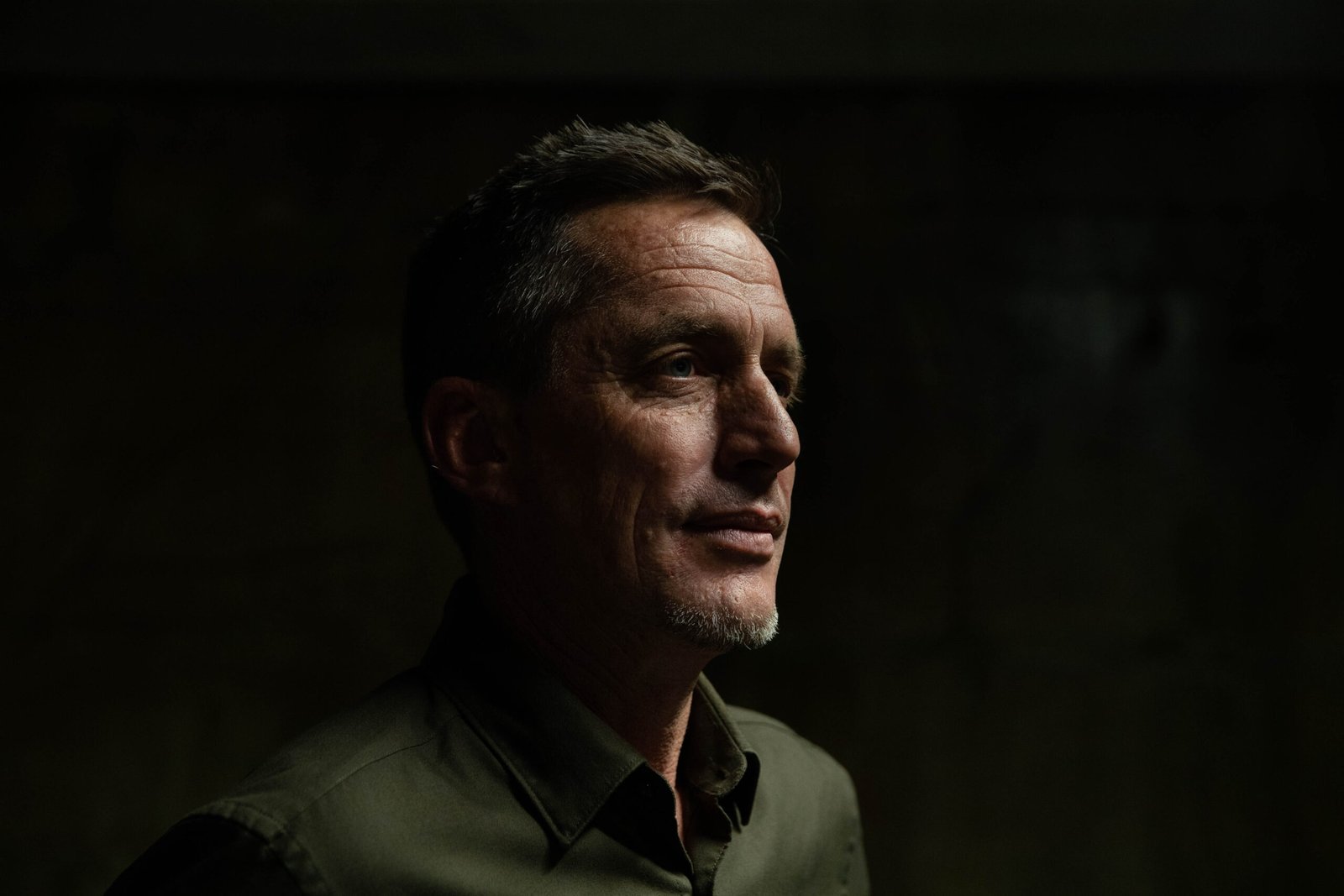
The Chinese miners had laid explosives at the entrance to their shafts. Shaanxi staff tried to forcibly block Cassius from entering sensitive areas. Fuelled by suspicion and language barriers, scuffles broke out between the Chinese and Australian camps.
“One day as we were going into one area, the Chinese started running off, they had laid explosives nearby to show us we weren’t supposed to be in the mine,” says one member of Head’s team who asked not to be identified because of fears for their safety.
“It was very, very harrowing.”
After months of tension, the Ghanaian Minerals Commission ordered Shaanxi to allow Cassius to inspect the mine. Shadowed by Shaanxi’s miners, Head and his team went down. They immediately noticed large gaps in the wall that had been filled with rocks but still had electrical cables running through. On their third descent, hundreds of metres into the mine, they decided to lose their minders in the darkness.
“We went 100 metres past one of the blocked walls. We switched our headlights off then held hands, and both touched a side of the wall and ran back,” says Head.
“When we got around a corner, we turned our lights on and furiously started pulling these rocks and boulders out of this blocked passage. The Chinese came running back just as we popped through the other side of the blocked wall.”
What they saw stunned them.
“It went for hundreds of metres. It was a drive for underground vehicles,” says Head, referring to a long underground tunnel that went into the Australian concession. “We could see that there were a huge amount of ports through all of the ceilings and in these ports, you can see where the gold had been removed.”
It was not the only tunnel. A consultant’s report commissioned by Cassius and seen by The Sydney Morning Herald and The Age found there was “a strong probability” that Shaanxi was trespassing on five levels of the Cassius concession, right along its eastern and northern borders.
“Clear evidence of trespass has been gathered which indicates that Shaanxi are mining and exploring into Cassius’s licence, to the north and east,” the report found. “Given the known geology and assumed grades of veins in the area, the amount of gold removed is probably significant.”
“[The value of gold taken] wasn’t in the millions but the tens of millions of dollars.”
Andrew Head
“The report’s conclusion was, without a doubt, that the Chinese miners had deliberately and intentionally trespassed outside of their own areas,” Head says. “When they exhausted the gold supplies there, they felt like they could go outside of their own tenement. They burrowed under the Australian-Ghanaian tenements and stole a lot of gold. [The value of gold taken] wasn’t in the millions but the tens of millions of dollars.”
Cassius had anecdotal estimates that Shaanxi had processed 8000 tonnes of ore per week over the past decade. The Australian company calculated the Chinese mine was taking approximately $142 million worth of gold out of the ground every year.
Ebenezer Bognaab, a spokesman for Shaanxi, says he “had never heard” of Shaanxi stealing gold from Cassius.
“What would they have that our company would steal from them?” he says.
In June last year, three Shaanxi employees were caught with 21 bars of gold worth $860,000 at Ghana’s Kotoka International Airport.
Ghana is Africa’s largest producer of gold but it takes only a fraction of the royalties it is owed. More than $8.5 billion was officially exported in 2019, according to the United Nations trade database Comtrade. That same year $12.8 billion was unaccounted for, the country’s Ministry of Lands and Natural resources found, warning it was being smuggled out to Asia, the Middle East and Europe.
In the 15th century, the Portuguese called it the Gold Coast. All down this tropical seaboard along the southern edge of West Africa, Portuguese merchants would load up their ships with plundered gold.
When the Portuguese built their fortress town in 1482, they called it “Elmina”. Locally, it came to be known as “the mine”.
Now the Portuguese are long gone, but the harmattan, a dry desert wind, continues to blow and miners fill the landscape with holes in search of fortune. Modern-day Ghana is pockmarked by subterranean tunnels, ventilation shafts and the ambitions of new economic conquistadors.
“Gold has always been here,” says Yen Nyeya, an academic and social justice campaigner in Talensi. “The British were mining there when they colonised it. My grandfather used to say that around the streets when they were young, they used to pick gold.”
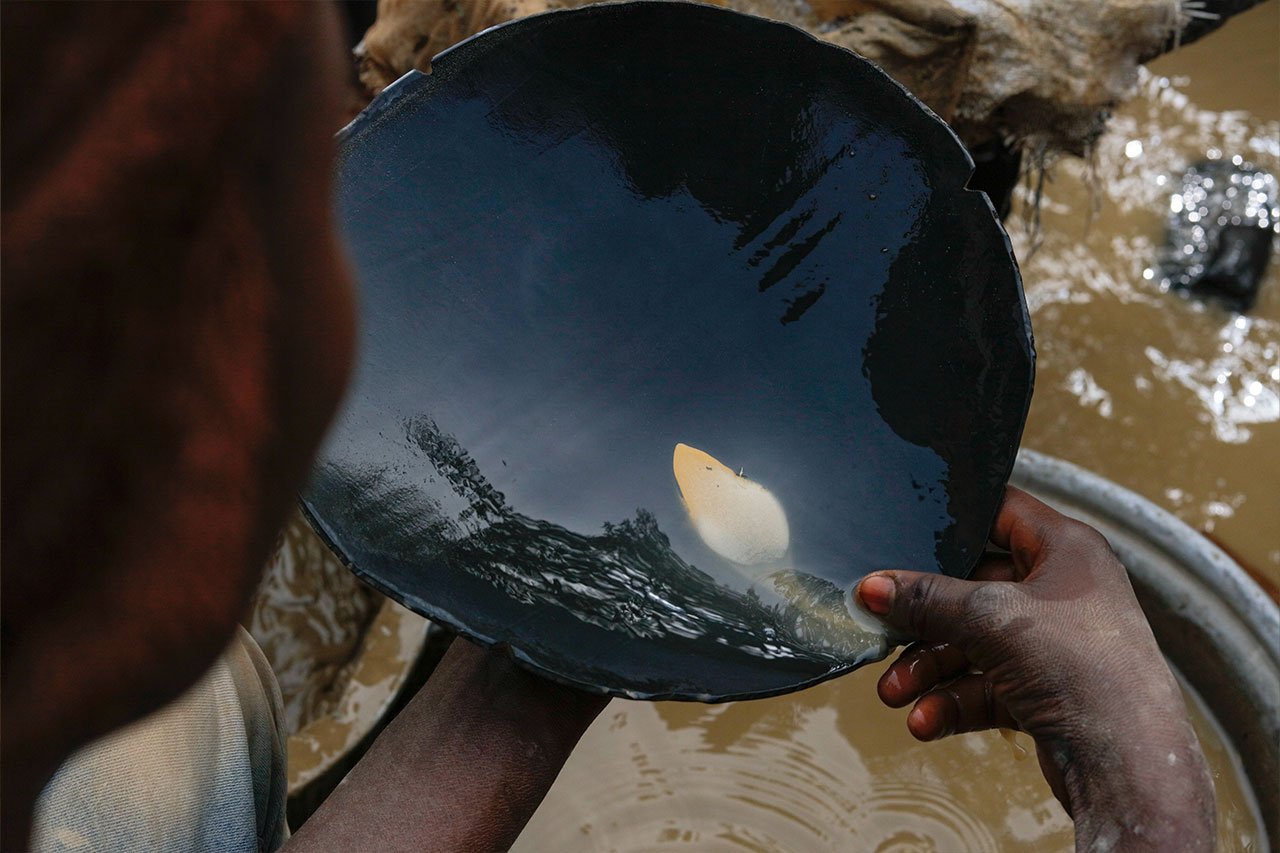
Until the last decade the British, Americans, Canadians, South Africans and Australians were the biggest foreign miners in this proud and brutal land. Many left behind their own history of exploitation and human rights abuses against the indigenous people of Ghana.
Now Chinese miners, backed by $200 billion of Communist Party investment are marking their ground.
“They have heavy equipment,” says Nyeya. “What they used to do in a week, now they can do in 10 minutes.”
In some parts of Africa, China’s ambitions have paid off.
A June survey by Johannesburg-based think tank, the Ichikowitz Family Foundation, found that 76 per cent of 4500 young Africans across 15 countries said China had had a good impact on their lives. It was the first time that China had beaten the US as the number one source of positive influence in Africa.
But the speed and scale of China’s state-backed operations have also had devastating consequences for some local communities.
Albert Naa, a pastor in Talensi, says life “was kind of okay in Talensi until the Chinese miners set foot on our lands”.
“Ever since it has been something else,” he says. “It’s as if they bought and paid the whole place so they can walk about and do whatever they want. No one can tell them anything. That is the part that frightens us.”
“Our elders have a saying that something bigger than a rabbit has taken over its hole,” he says. “That is something that is wicked in nature is trying to take what is ours.”
More than 60 miners have been killed in Shaanxi’s mines since 2013. Local leaders claim not all of the deaths were accidental.
On January 22, 2019, Head was woken up by a phone call from his field manager in the middle of the night.
“Boss something has happened, many people have been killed, and many are injured,” his colleague told him.
Head arrived at a tunnel near the Shaanxi mine in the village of Gban at first light. Known as a crawl pit, the small entrances – no wider than a man’s shoulders – were covered up by a thatched roof. The pits marked the entrances to the hidden caves of the Galamsey, Ghana’s unlicensed miners who, out of economic desperation, venture into the mines and raid them when the foreign miners leave. They scrape a meagre dusting of gold away from the walls, just enough to keep their families fed for another day.
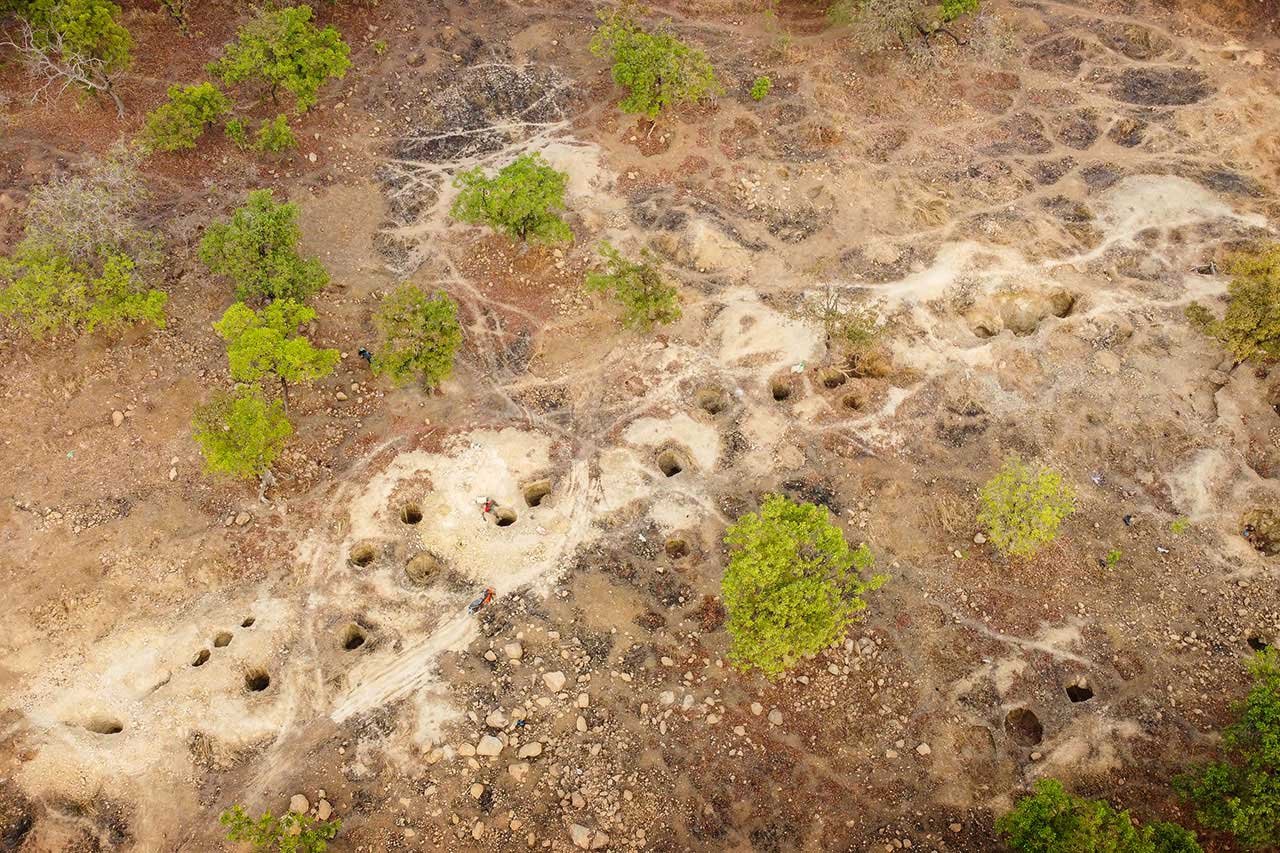
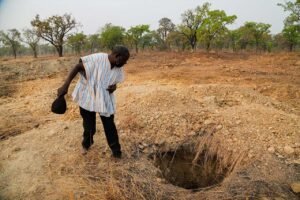
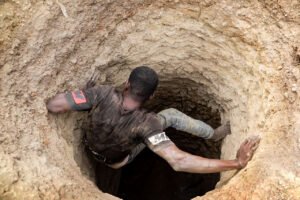
“Their mates work for the Chinese and told them that they were finding huge amounts of gold so they intercepted the Chinese tunnels which were trespassing on our mining tenement,” says Head.
But on this day, nothing went to plan for the Galamsey. Just before 11pm explosions went off in the Shaanxi mine, sending dozens of miners scurrying through the shafts gasping for air. They jammed each other through the tiny holes that led to the surface, not knowing they had already ingested a poison that would eventually kill them.
“There was no warning,” says one of Cassius’ local workers who asked not to be identified due to concerns about his family’s safety. “Usually they have a permit to blast at a certain time [to clear passages through the mines] but there was no notice this time”.
By the time Head arrived, four bodies lay outside the shaft. A dozen more would follow.
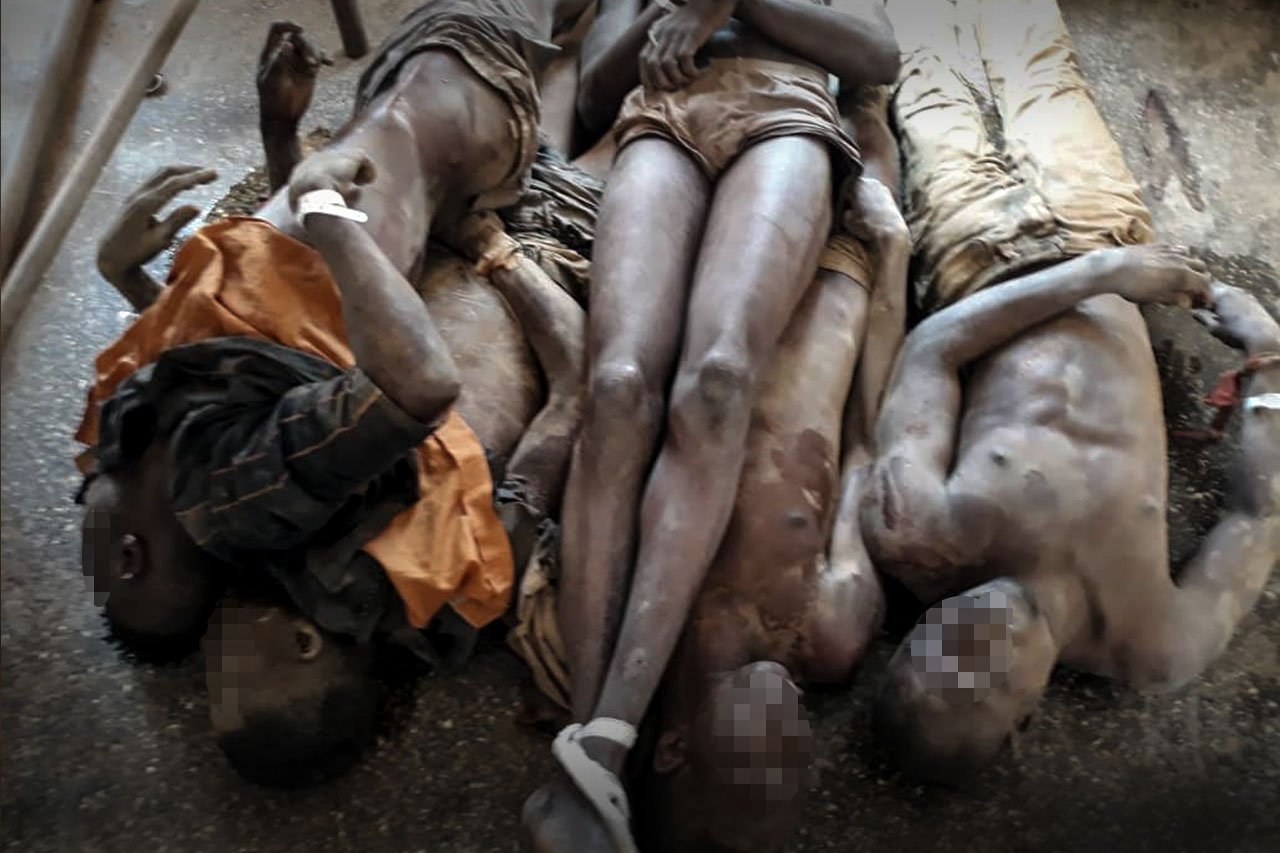
Outside the crawl pit, the stench of chlorine filled the air. The victims’ mouths frothed with poison.
“It was no accident,” says Head. “Blasting is done by procedure. You do it on a prescribed day and time each week. You have so many safety protocols around it. This was done on a completely different day and time of the week to the prescribed blast.
“We smelled explosives when we arrived but we suspected very strongly that the Chinese had used chlorine in their blasting. It’s not always the explosion that will kill you. It’s the gas from the explosion. When it is mixed with chlorine that becomes a toxic poison. It stays around longer and kills people.
“They were going out of their way to hurt, maim and kill people to stop them from stealing the gold that they were actually stealing from the Australian mine.
In Head’s view, this was deliberate.
“It was murder, pure and simple. I have no doubt in my mind that it was.”
Charles Boazor, a community leader whose brother was one of the first miners killed in a Shaanxi mine, says the intention was to put fear into the hearts of the small-scale miners. “They knew that the boys were under [ground]. So they blasted in such a way that the boys inhaled the toxic chemicals and died from it.”
Bognaab, the Shaanxi spokesman, denies the allegations. “Somebody can say we, oh, we killed 30. Somebody can say, oh the company killed 40. The company killed 60. The company killed 70.
“My response to that one is that it is not true. The company has never killed an individual. [It has not] consciously wanted to kill somebody. In fact, if we are killing people, people will not come and work with us.”
Bognaab says the Galamsey were recruited by a local miner and sent down to work. “Unfortunately, they were gassed up,” he says.
An inquiry by Ghana’s Mineral Commission into the deaths of the 16 miners found the blasts were not recorded in Shaanxi’s log books; there was no foreman overseeing the operation; the ventilation officer had resigned; and there was no risk assessment or warnings given before the blasts went off. The company was fined $70,000. At least 45 other miners have died in similar circumstances inside the Shaanxi mines since 2013.
Dozens have died within hours, others have taken up to 10 days – their fate is often tied to whether they drink water as they come out of the mine. Chlorine is occasionally used in mines to extract metals from their ores and concentrates. In small doses, it is relatively harmless but in high doses, it can be deadly. When it interacts with water it can transform into hydrochloric acid as it makes contact with airways in the body, causing the miners to froth at the mouth as they die.
In rescue videos obtained by The Sydney Morning Herald and The Age, the Gban miners are heard yelling “don’t give him water” as they sprint towards ambulances.
“I still remember the words of my own brother,” says Boazor. “I was speaking with him on the phone. He said, ‘I can’t breathe. I can’t sleep’. He’s always coughing, coughing blood. That is when they’ll go to the hospital. And before they realise it, their lungs are in trouble. My brother only survived until the third day. By the 10th, most will die”.
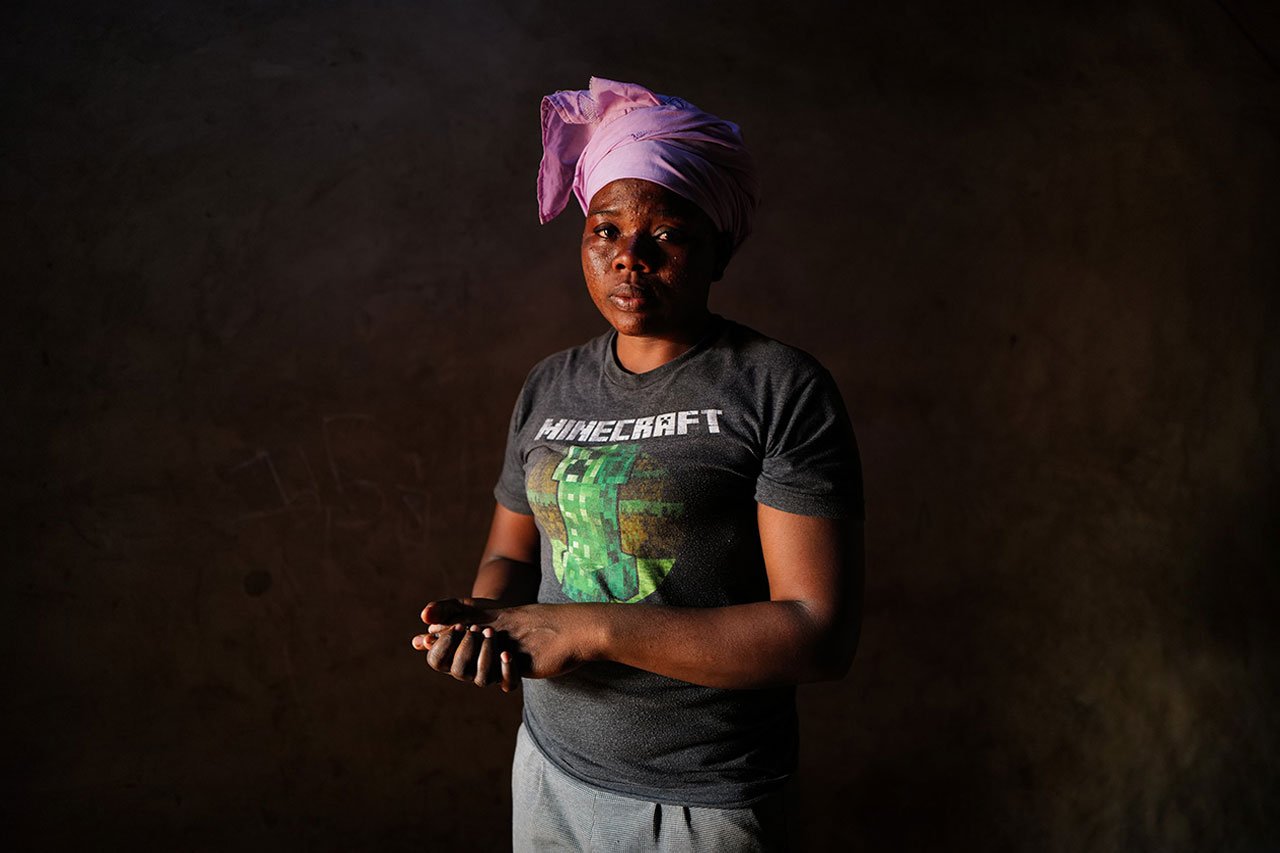
Teni Ghaatuon’s husband lasted two days. Desperate to feed his family, he returned to the mine site the day after the explosion rocked Gban.
“That was the end. He didn’t come back alive,” says Ghaatuon.
Ghaatuon is still unable to come to terms with the tragedy. “I have not told the children yet that their father is dead because I don’t know how they will react,” she says.

Kwame Teng’s brother died inside the mine, then he lost his father to depression. “Now I live in this house with my mother alone,” he says. “The room my brother was occupying before his death has remained empty since he was killed two years ago. There is nobody there.”
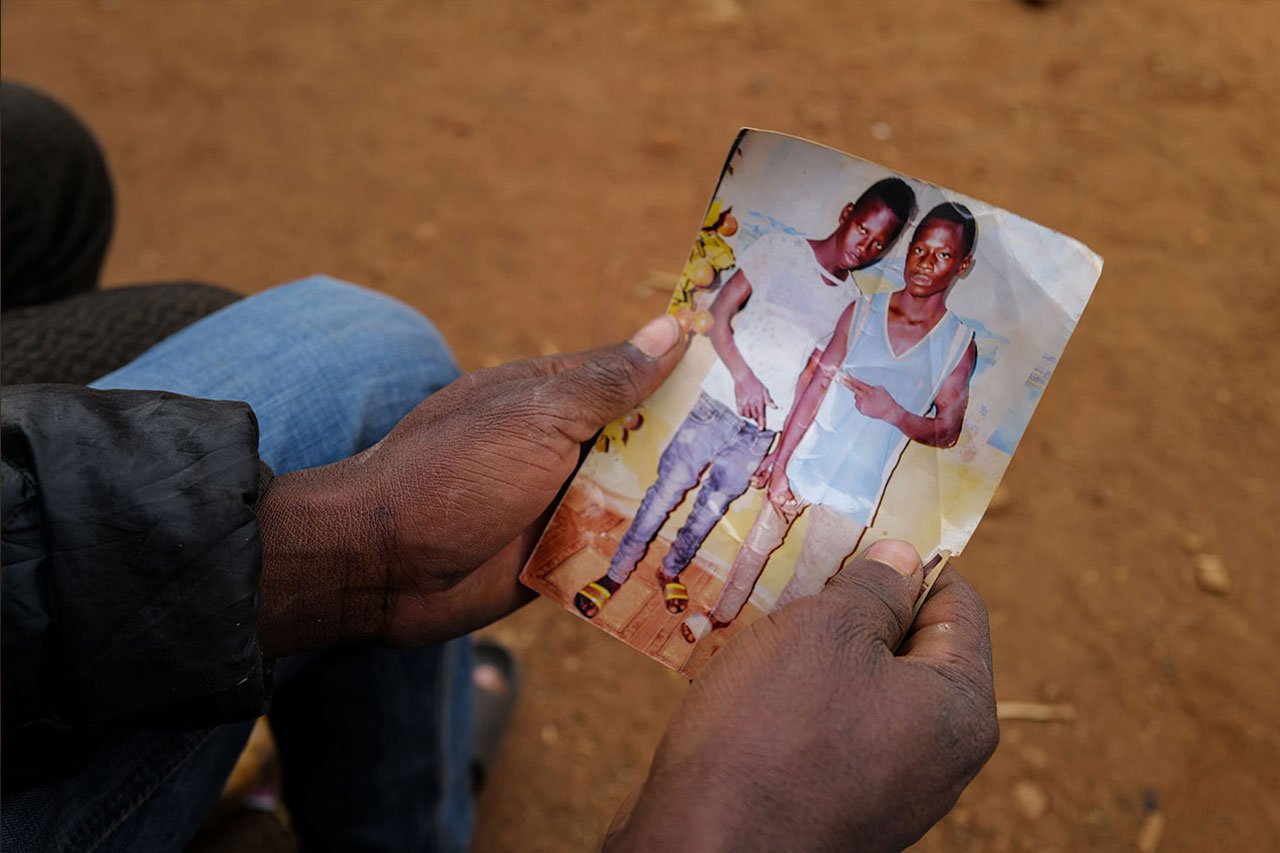
Six of Tii-roug Yaro Zumah’s brothers died at the same site. “People are dying. This current Ghanaian government don’t give a damn. I have not seen anything that they have done right,” he says.
“Shaanxi is making money from our land and they are using the money against us. There needs to be international pressure on China and the actions of its companies.”
In Gban, the men – sometimes as young as 14 – are the family breadwinners, leaving behind destitute wives, mothers and grandmothers. Others, like 17-year-old Prosper (pictured at the top), say they have no choice but to keep going down into the mines because there are few other places to work in Gban. None of the dozen families of the unlicensed miners killed inside the mines The Sydney Morning Herald and The Age spoke to for this year-long investigation have received compensation from Shaanxi for their loss.
The Shaanxi Mining Company
The company, listed as the Shaanxi Mining Company Ghana Limited, is wholly owned by Shaanxi Jiatai Hengrun Mine Resource Exploitation, according to Chinese company records. The Shaanxi Mining Company Ghana Limited is run by Chinese businessman Wei Xing but Shaanxi Jiatai Hengrun is owned by husband and wife Cheng Zhiping and Cheng Aifang. Zhiping was the deputy director of the Chinese government’s Finance and Taxation Supervision and Inspection Bureau of Shenmu County in Shaanxi Province. Aifang was also a civil servant. In 2016, China’s then ambassador to Ghana, Sun Baohong, toured the mine. Sun told Shaanxi the Chinese government would lobby for greater mining access for Chinese companies in Ghana and “create a favourable investment environment for legally operating Chinese-funded mining companies”.

There is no suggestion that Shaanxi’s owners or the ambassador were directly involved in any wrongdoing. The company has gone to extraordinary lengths to minimise the impact of the Gban miners’ deaths on their operations. In 2018 the lobbying reached the highest levels of Ghanaian politics and the judiciary. Cassius, the Australian mining company, took Shaanxi to court on the basis of the independent report that had found Shaanxi had stolen significant amounts of gold from the Australian concession. Cassius sought an injunction preventing Shaanxi from mining for any more gold.
While the hearing was underway, officials from Shaanxi were seen meeting at the home of the judge presiding over the case, Justice Jacob Boon. When Shaanxi was notified that it had been seen meeting with the region’s most senior judge outside the courtroom, it attempted to bribe one of the authors of this article, Edward Adeti, with the gift of a motorbike and $1000 in return for killing the story.

“We know you are using a very wretched motorbike. This is just the beginning for you,” one of the officials told Adeti. “We have held a meeting to see how every month you’ll get something from us. If you publish it, it would affect many people.”
Accompanying the Shaanxi officials to the meeting with Adeti was an aide to Rockson Bukari, the Minister of State at the Office of the Ghanaian President Nana Akufo-Addo. After his aide was caught on tape, Bukari was forced to resign. There is no suggestion that Bukari or Akufo-Addo were involved in the incident. Justice Boon recused himself from the case. Four years after Cassius brought action against Shaanxi, the case remains before a local court.
Bognaab, the company’s spokesman, denies the company had received assistance from Ghanaian authorities.
“We are a proper licensed mining company, mining according to the rules and laws of the mining industry in Ghana and we do not need the help of any politician to operate,” he says.


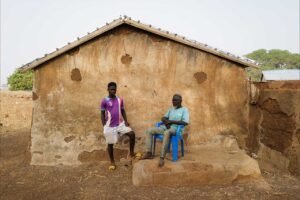
Two years after the mine’s deadliest incident, life has gone backwards for the community that surrounds Shaanxi’s mine. In Gban, also known as Gbane, villagers scrape by on subsistence living in this windswept township, 700 kilometres north of Accra.
“It looks like Tattooine,” says Head, referring to the dystopian Star Wars desert planet. “You literally scrape past village huts in your car. You see intimate pictures of poor mothers hanging out their washing, children walking to school and Shaanxi’s Chinese miners walking through, trying to communicate.”
The school has no chairs so children have to bring their own. Teachers have to cross rivers on skeletal bridges teetering across rivers to get to class.
“The company doesn’t pay taxes but the police have put a police station in the front yard of the company,” says Boazor, the brother of one of the victims. “Their main job is to arrest the locals and to protect the Chinese company. Nobody is willing to help the poor people.”
Locals who officially work for the mine are paid $50 a month, compared to an average salary of $200 a month for a teacher, but employees say they have little choice.
Bognaab says communities will protest regardless of the facilities provided.
“The company cannot meet everybody’s expectations,” he says. “That’s why I’m asking, are they saying we have done something or we haven’t done something at all?”
Locals say Shaanxi’s efforts have not come close to making up for a decade of exploitation.
Some of those affected are the local Shea farmers.
For generations, mostly female farmers have plucked an olive-like fruit from Shea trees that can be used for butter and oil. A typical Shea tree can live for up to 300 years, but few last that long anymore in Gban.

“It is like our gift from God,” says Naa, the local pastor. “We get so many things from that particular plant. Each tree supports a number of families, but Shaanxi has to cut them down because if they don’t they will not get access to the land to mine.”
Bismark Zumah, a former assembly member for the Gban electoral area, says Shaanxi has not offered any compensation for the destruction of the trees.
“Our women and our fathers in the community, they cannot even feed themselves three square meals a day. Yet the quantum of gold that is being carried out from our land every week to China is shocking.”
That volume is about to get bigger. In September, Shaanxi rebranded as Earl International Group and was granted a large-scale mining licence by the Ghanaian Minerals Commission of 16 square kilometres – 50 times its original size.
Earl International claims that when full-scale production kicks off at the site, the daily average throughput will be in excess of 2000 tonnes per day.
While Earl International has had its territory expanded, Australian miner Cassius has been unable to renew its licence to begin mining in the tunnels from which Shaanxi has been accused of stealing.
Head has since left Cassius. The company has declined to comment due to pending legal action.
In April, Cassius said it would commence proceedings through the United Nations Commission on International Trade Law at the London Court of International Arbitration. Cassius claims the Ghanaian government had knowledge of Shaanxi’s trespassing and theft from Cassius and did nothing about it; attempted to redraw boundaries in favour of the Chinese miner and failed to act on allegations of demonstrated corruption at senior levels of the government.
It is suing the Ghanaian government for $395 million in losses from the Gban project.

Source: The Sudney Morning Herald


